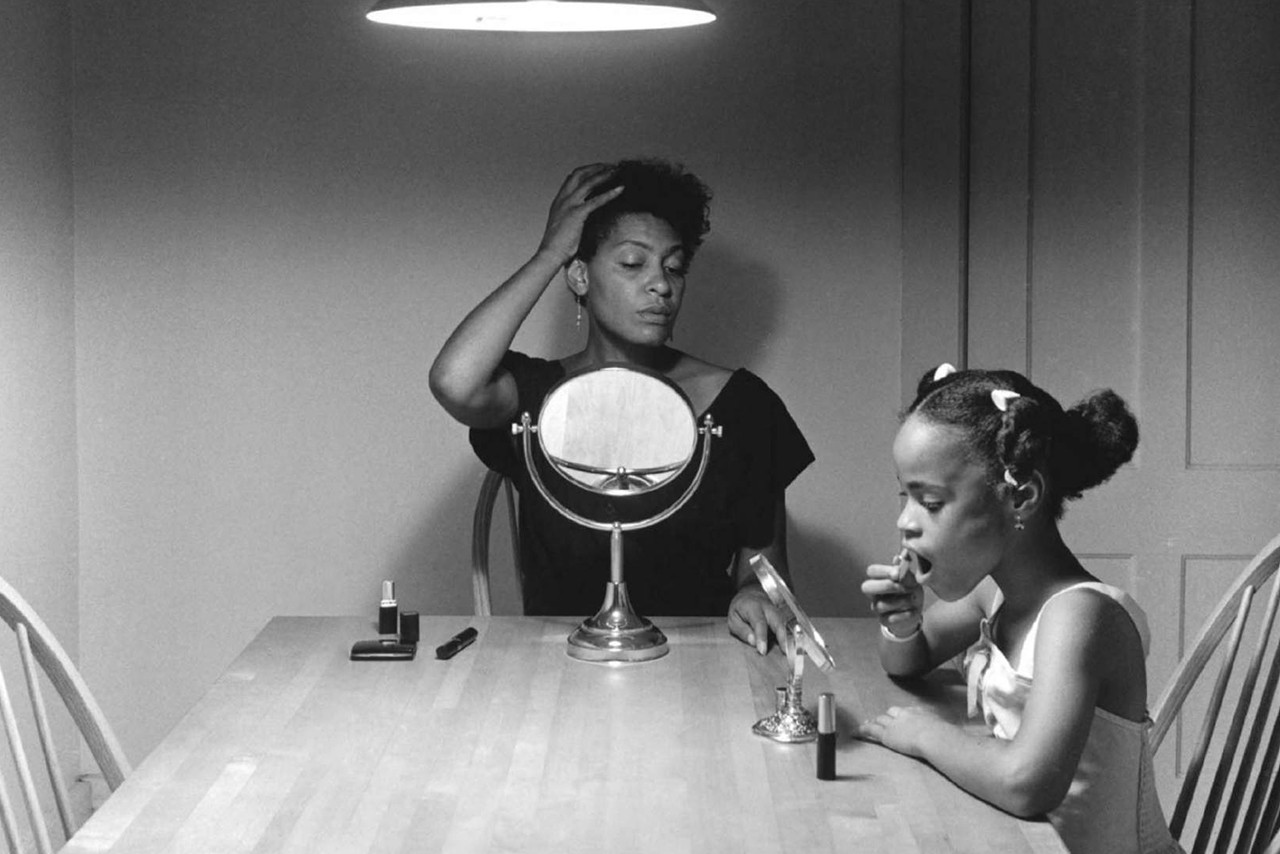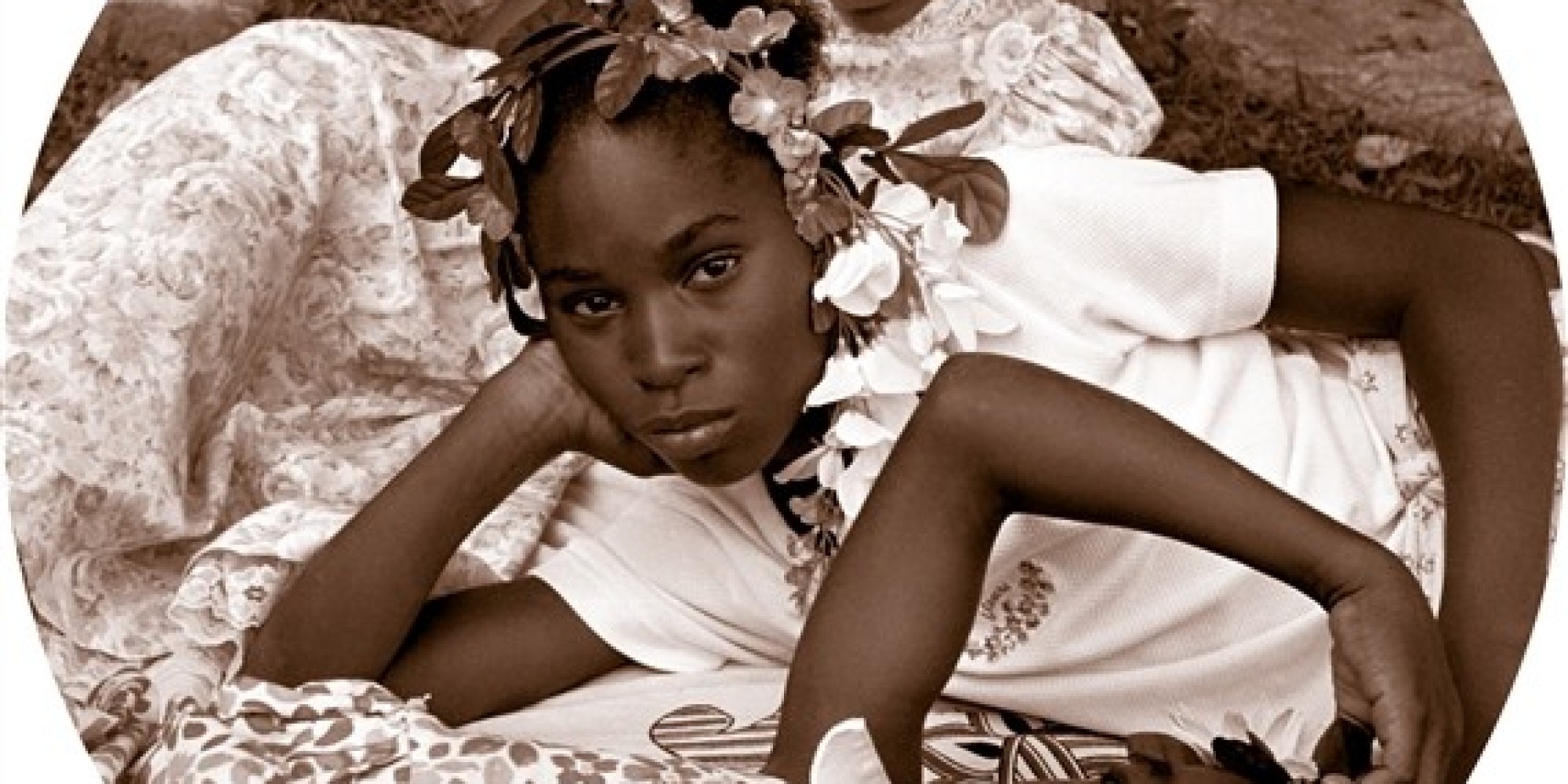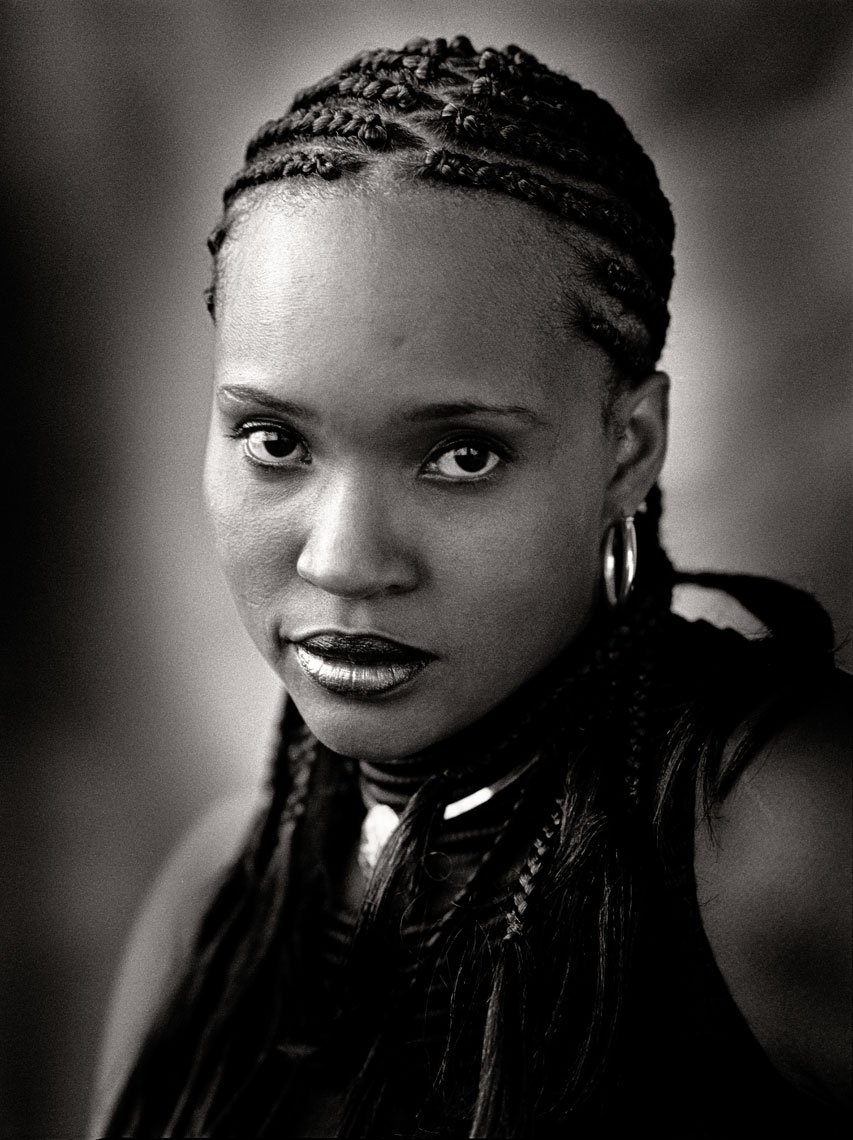Carrie Mae Weems is a renowned photographer known for her powerful and thought-provoking images that challenge societal norms and shed light on issues of race, gender, and identity. One of her most iconic works is The Kitchen Table Series, a collection of photographs that captures the intimate moments and complexities of domestic life. One particular image that stands out is Woman Feeding Bird, which encapsulates the themes of family, femininity, and the black experience.Carrie Mae Weems: Exploring Identity and Domestic Life through Photography
The Kitchen Table Series consists of 20 photographs taken between 1990 and 1992, featuring Weems herself as the central figure in various scenarios at her kitchen table. Through this series, Weems explores the dynamics of relationships and the roles that women play within the household. Each image tells a story and invites the viewer to reflect on their own experiences and perceptions of domestic life.The Kitchen Table Series: A Groundbreaking Collection
In the photograph Woman Feeding Bird, Weems is seen sitting at her kitchen table, looking out the window with a bird perched on her hand. The bird symbolizes freedom and escape, while the act of feeding it shows nurturing and care. This image can be interpreted as a commentary on the expectations placed on women to balance their roles as caregivers and nurturers, while also yearning for their own freedom and independence.Unpacking the Symbolism of "Woman Feeding Bird"
One of the striking elements of The Kitchen Table Series is the use of black and white photography. Weems intentionally chose this medium to highlight the complexities of race and identity within the domestic sphere. The black and white contrast also adds a timeless quality to the images, allowing them to transcend time and speak to a universal experience.Black and White: A Powerful Contrast
As an African American woman, Weems often explores the intersections of race and gender in her work. The Kitchen Table Series is no exception, as it challenges traditional gender roles and the expectations placed on women within the household. Weems presents a strong and empowered image of black womanhood, breaking away from the stereotypical depictions often seen in mainstream media.Feminism and the Black Experience
Through her self-portraits in The Kitchen Table Series, Weems also raises questions about identity and representation. By placing herself as the central figure, she is reclaiming her own narrative and challenging the dominant gaze of the male and white perspective. This subversion of the traditional power dynamic is a recurring theme in Weems' work.Identity and Representation
Since its debut in 1990, The Kitchen Table Series has become a landmark work in the history of photography. It has been exhibited in galleries and museums around the world and has sparked conversations about race, gender, and domesticity. Weems' powerful imagery continues to resonate with viewers and remains as relevant today as it was when it was first created.The Impact of The Kitchen Table Series
Carrie Mae Weems' The Kitchen Table Series and the photograph Woman Feeding Bird serve as a testament to the power of photography as a medium for social commentary and reflection. Through her work, Weems challenges societal norms and encourages us to question our own perceptions and biases, making her an important figure in contemporary art.In Conclusion
The Power of Representation in Carrie Mae Weems' "The Kitchen Table Series: Woman Feeding Bird"

Exploring Identity, Family, and Domestic Space
 The kitchen table holds a unique and intimate place in every household. It is where meals are shared, conversations are had, and memories are made. In Carrie Mae Weems' iconic "The Kitchen Table Series: Woman Feeding Bird," the kitchen table becomes a powerful symbol of representation, as it serves as the backdrop for the artist's exploration of identity, family, and domestic space.
The Kitchen Table Series
is a collection of photographs taken by Weems between 1989 and 1990. The series features the artist herself, as well as her friends and family, staged in various scenes around a kitchen table. In one photograph, titled "Woman Feeding Bird," we see a woman sitting at the table, looking off into the distance, while a bird perches on her hand. This seemingly simple image holds a deeper meaning and speaks to the complexities of identity and representation.
Carrie Mae Weems
is known for her powerful and thought-provoking works that challenge societal norms and address issues of race, gender, and class. In "Woman Feeding Bird," Weems is making a statement about the representation of black women in art and society. The woman in the photograph is not just passively feeding a bird, she is actively taking control of her own narrative and representation.
The kitchen table holds a unique and intimate place in every household. It is where meals are shared, conversations are had, and memories are made. In Carrie Mae Weems' iconic "The Kitchen Table Series: Woman Feeding Bird," the kitchen table becomes a powerful symbol of representation, as it serves as the backdrop for the artist's exploration of identity, family, and domestic space.
The Kitchen Table Series
is a collection of photographs taken by Weems between 1989 and 1990. The series features the artist herself, as well as her friends and family, staged in various scenes around a kitchen table. In one photograph, titled "Woman Feeding Bird," we see a woman sitting at the table, looking off into the distance, while a bird perches on her hand. This seemingly simple image holds a deeper meaning and speaks to the complexities of identity and representation.
Carrie Mae Weems
is known for her powerful and thought-provoking works that challenge societal norms and address issues of race, gender, and class. In "Woman Feeding Bird," Weems is making a statement about the representation of black women in art and society. The woman in the photograph is not just passively feeding a bird, she is actively taking control of her own narrative and representation.
Exploring Family Dynamics and Domestic Space
 At first glance, "Woman Feeding Bird" may seem like a simple family scene, but upon closer examination, we see the complexities of family dynamics and domestic space. The woman is alone at the table, surrounded by empty chairs. This could represent the absence of family members, or perhaps the isolation and loneliness that can be felt in domestic spaces.
The bird perched on the woman's hand could symbolize the weight and responsibility of motherhood. The woman's gaze off into the distance could suggest the constant juggling of roles and responsibilities that many women face in the domestic sphere. Weems' use of the kitchen table as the setting for this photograph adds another layer of meaning, as it is a space traditionally associated with women's work and domestic duties.
In conclusion,
Carrie Mae Weems' "The Kitchen Table Series: Woman Feeding Bird"
is a powerful and thought-provoking work of art that challenges societal norms and explores the complexities of identity, family, and domestic space. Through her use of the kitchen table as a symbol of representation, Weems invites viewers to reflect on their own perceptions and biases, and to question the narratives that have been imposed upon women, particularly black women, throughout history.
At first glance, "Woman Feeding Bird" may seem like a simple family scene, but upon closer examination, we see the complexities of family dynamics and domestic space. The woman is alone at the table, surrounded by empty chairs. This could represent the absence of family members, or perhaps the isolation and loneliness that can be felt in domestic spaces.
The bird perched on the woman's hand could symbolize the weight and responsibility of motherhood. The woman's gaze off into the distance could suggest the constant juggling of roles and responsibilities that many women face in the domestic sphere. Weems' use of the kitchen table as the setting for this photograph adds another layer of meaning, as it is a space traditionally associated with women's work and domestic duties.
In conclusion,
Carrie Mae Weems' "The Kitchen Table Series: Woman Feeding Bird"
is a powerful and thought-provoking work of art that challenges societal norms and explores the complexities of identity, family, and domestic space. Through her use of the kitchen table as a symbol of representation, Weems invites viewers to reflect on their own perceptions and biases, and to question the narratives that have been imposed upon women, particularly black women, throughout history.



















.jpg)






























:max_bytes(150000):strip_icc()/MLK-589c7eaf3df78c4758d16d97.jpg)








































